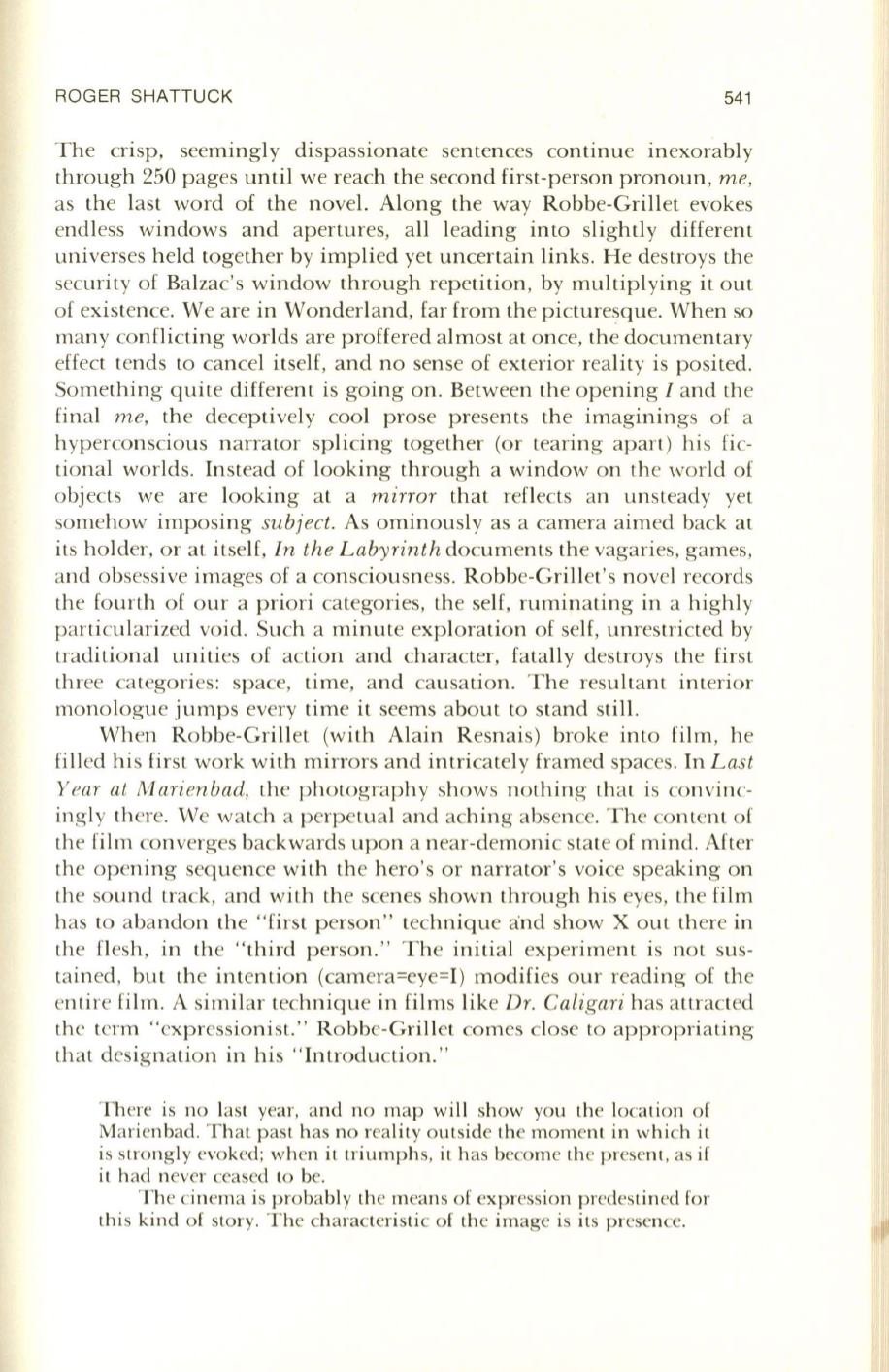
ROGER SHATTUCK
541
T he cri sp , seemingl y di spass iona te senten ces continue inexorabl y
through 250 pages until we reach the second first-person pron oun ,
m e,
as the las t word of the novel. Alon g the way Robbe-Grill et evokes
end less windows and apertures, all leading into slightly different
universes held together by implied yet uncertain links. He des troys the
security o f Balzac's window th rough repetiti on , by multipl ying it out
of exi stence. We are in Wonderl and, far from the pi ctu resque. When so
many conflicting wo rlds are p roffered almos t a t once, the documentary
effect tends to cancel itself, and no sense o f exterior reality is posited .
Something quite different is going on. Between the o pening
I
and the
fin al
me,
the deceptively cool prose p resents the imaginings of a
hyperconscio us narrator splicing together (or tearing apart) hi s fic–
tional worlds. In stead o f loo king through a window on th e world of
obj ects we are looking a t a
mirror
that refl ects an unsteady yet
somehow imposing
subject.
As ominously as a camera aimed back a t
its ho lder, or at itself,
In the L abyrinth
documents the vagaries, games,
and obsessive images of a consciousness. Robbe-Grill et's novel records
the fourth o f our a priori ca tegori es, the self, rumina ting in a highl y
particul arized void. Such a minute exploration of self, unres tricted by
traditi onal uniti es of action and cha racter, fa tall y destroys the first
three ca tegories: sp ace, time, and causa tion. The resultant interior
mono logue jumps every time it seems about to stand still.
Wh en Ro bbe-Grillet (with Al ain Resnais ) broke into film , h e
fill ed hi s first wo rk with mirrors and intricately framed spaces. In
L ast
Year at Marien bad,
th e photograph y shows nothing tha t is convinc–
ingly th ere. We watch a perpetual and aching absen ce. The content o f
the film converges backwards upon a near-demo ni c sta te of mind. After
the opening sequence with the hero's o r narra tor's vo ice speaking on
the sound track, and with the scenes shown through hi s eyes, the film
has to abandon the " first person " technique and show X out there in
the fl esh , in the " third p erson. " The initial experiment is no t sus–
tained, but the intention (camera=eye=I) modifi es our readin g of the
entire film. A similar technique in films like
Dr. Caligari
h as attracted
the term "express ioni st." Robbe-Grill et comes close to appropriating
that des igna tion in hi s " Introductio n. "
There is no last year, and no map will show you the loca tion of
Mari enbad. T hat past has no rea lity o utside the moment in which it
is strongly evoked; when it triumph s, it has become the p resent, as if
it h ad never ceased
to
be.
T he cinema is probabl y th e mean s of expression predestined for
thi s kind of story. T he characteri sti c of th e image is its presence.


